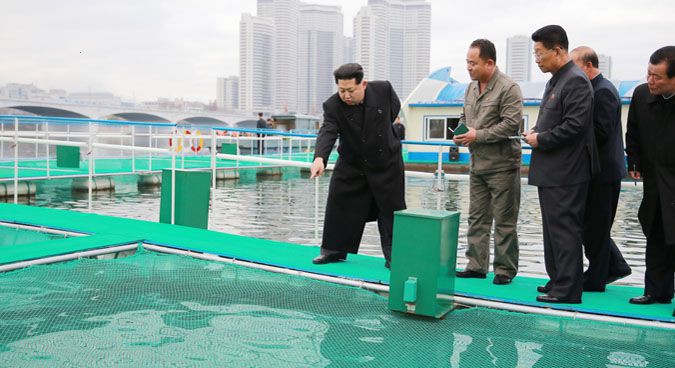
November: N. Korean regime shows leadership stability, emphasizes fishing
Kim moving away from purges as regime stabilizes, prioritizes economic activity for “people’s well-being
The month of November 2015 saw a continuation of the North Korean leadership’s &
+ recent emphasis on domestic economy, including a potential change in economic policies concerning domestic fish production. The increased prioritization of fishing and pressure on fisherman may have led to recent incidences of “ghost” fishing boats turning up in Japan.
+ recent emphasis on domestic economy, including a potential change in economic policies concerning domestic fish production. The increased prioritization of fishing and pressure on fisherman may have led to recent incidences of “ghost” fishing boats turning up in Japan.
November also saw the reappearance of Han Kwang Sang, the temporary absence of Hwang Pyong So, and continued absence of Choe Ryong Hae, as well as the death of retired KPA marshal Ri Ul Sol. Though many often stipulate that the absence of North Korean elites from public view is indicative of an individual’s purge and subsequent execution, the reappearance of several prominent North Korean elites in the months have suggested a possible reduction in Kim Jong Un’s purge tactics and “reign of terror” leaning instead toward a reeducation strategy.
KIM’S ACTIVITY IN NOVEMBER
Kim made a total of 12 public appearances in November. Kim began the month attending to military and political affairs, appearing at an anti-aircraft missile firing drill of the Korean People’s Army Air and Anti-Air Force and a meeting of military education officers. He followed these events with attendance at the funeral of Ri Ul Sol, a retired KPA marshal who had served as commander of the Guard Command and a member of the National Defense Commission. In the latter part of November, Kim focused on economic affairs, which comprised six of his 12 appearances. Kim visited two fisheries and one fish-breeding ground, two factories, and rode on a trial operation of a new subway train.
PURGES AND PROBLEMATIC OBSERVATION
… while North Korean officials are in North Korea … we only see the activity which the North Korean government chooses to publish
Observing and analyzing North Korean leadership activity can be difficult because of limited information and knowledge. The vast majority of publicly available information on the current activity of North Korean leadership figures comes from Pyongyang’s own state-run media. Essentially, this means that while North Korean officials are in North Korea (which is most of the time) we only see the activity which the North Korean government chooses to publish. There is no independent press in North Korea to report on public events, conferences, and other appearances by the government and party officials. So, we only know where and when an official appeared if the state media chooses to photograph and/or mention that appearance. The North Korean government and ruling Workers’ Party of Korea also apparently feel no obligation to inform the public (let alone foreign observers) of the whereabouts or current status of senior officials when they are not otherwise appearing in public.
The distinction between “absence” and “absence from public view” is significant because not all North Korean officials who disappear from state media are necessarily inactive in government and politics or are away from the capital. The lack of observable presence can sometimes simply mean a person is not attending events covered by state media or that the person’s presence is not being reported or photographed by state media.
What all of this means is that sometimes we do not see a North Korean official and have little to no verifiable information regarding his or her whereabouts or the reason for the absence from public view. Given the reputation of the North Korean regime for being authoritarian and its history of purging officials by execution or otherwise unceremoniously removing them from the system, it is no wonder that observers are often quick to question the fate of any North Korean official who goes unseen for very long and that these unexplained absences frequently result in rumors of purges. The required length of an absence before it is suspicious is, of course, dependent on the given North Korean official and his or her normal frequency and nature of public appearances.
… observers and analysts should be conservative in interpreting absences as indicative of purges
But observers and analysts should be conservative in interpreting absences as indicative of purges. Although a purge means a disappearance, the reserve is not necessarily true. There are numerous reasons – some known and some unknown – for why a North Korean government or party official may be out of sight for weeks or even months at a time. As with governments and political parties in other nations, North Korean officials may sometimes work on projects which occupy much of their time and prevent them from attending public events or accompanying the leader on trips. Also, as human beings, they take vacations, can require medical treatment, can have family emergencies, etc. They may also be reassigned to posts which require or allow less attendance at public events or may even retire altogether. Of course, North Korea does occasionally punish senior officials, but even in these cases the person is not always executed or even permanently removed from the regime. In the past, numerous North Korean officials have disappeared from public view for months or even years, only to reappear and return to work, sometimes at positions of similar rank to that which they held when seen last.
ABSENCES, REAPPEARANCES AND RUMORS
In November and early December there have been at least three noteworthy cases of senior officials disappearing, reappearing, or both. Choe Ryong Hae, WPK Secretary for Workers’ Organization and chairman of the State Physical Culture and Sports Guidance Commission, last appeared in state mediaon October 22 and was unseen for the entire month of November, including his conspicuous absence at Ri Ul Sol’s funeral. According to South Korean media and government sources, Choe is undergoing reeducation as punishment for problems with the power plant under construction near Mount Paektu. Given Choe’s history of disappearing only to reappear later, it is very likely he will once again return.
Conversely, Han Kwang Sang reappeared on at the funeral of Ri Ul Sol after an eight-month absence from public view, having been last seen on March 3. Han, who was previously (and may still be) director of the WPK Finance & Accounting Department, was reported as having been executed along with Hyon Yong Chol due to shortcomings regarding Pyongyang’s financial and foreign currency-earning operations. While it is certainly possible that Han was punished somehow for some failure in his duties, the report of his execution is clearly shown to have been rumor.
The third example is that of Hwang Pyong So. Hwang is director of the KPA General Political Bureau and one of the officials who most frequently appears with Kim Jong Un. In fact, Hwang himself rarely makes an appearance without Kim. Hwang was absent from public view for 22 days from November 11 throughDecember 3. Though this is not an exceptionally long absence, it was seen as unusual for Hwang. According to data from the NK News Leadership Tracker, in the past year (December 2014 through November 2015) Hwang has appeared at least 94 times, second only to Kim Jong Un’s 161 appearances and more than double that of the third most frequently appearing official, Jo Yong Won (at 39 appearances). But unlike most such absences, in this case few if any sources speculated that Hwang had been executed. Instead, South Korean media reported that Hwang was in China receiving medical treatment during this time.
Some of these examples, along with others, show that recently several officials were apparently punished without execution and then allowed to return. This serves as evidence of a probable shiftwithin North Korea. But the cases of Choe Ryong Hae and Hwang Pyong So in particular were notable in a different manner. In both of these most recent absences, media outside North Korea speculated that the missing official was not executed, but either undergoing reeducation (in the case of Choe) or receiving medical treatment abroad (in the case of Hwang). Previously it was common to talk about Kim’s regime as a “reign of terror” or “reign of fear” and typical of observers to assume missing elites had been executed. This change may indicate that the external perception of the North Korean regime under Kim Jong Un is gradually changing as well and that perhaps his rule is being viewed as more solidified and stable.
NEW POLICIES, BIG HAULS AND GHOST SHIPS
Kim Jong Un’s continued emphasis on economic policy may also be an indication of the perceived development of regime stability. As the North Korean leadership can spend establishing regime political security, they may look to new policies to represent the regime’s legitimacy not just externally but also domestically. One such strategy may be to demonstrate careful consideration for the “comfort of the people,” expressing concern for the people’s well-being, housing, and food. Recent North Korean leadership attention on fishing production could serve as an example of such a policy shift.
Of the six economic-related appearances Kim Jong Un made this month, three specifically focused on fish production. From mid to late November, Kim visited three fish producing facilities: two fisheries and one fish-breeding ground. When coupled with last month’s visit to the Pyongyang Catfish Farm, North Korea’s Supreme Leader has visited a total of four fish production locations in less than a month. Additionally, recent Rodong Sinmun publications have announced a new Central Committee of Workers’ Party of Korea’s production policy highlighting “big fish hauls.” Described as a historic revolutionary movement of “big fish hauls,” the policy calls for a “radical turn in the development of the fishing industry.”
Kim was reported to have stated that the new grounds would serve to make ‘the (North Korean) people’s life happy and bountiful’
Kim Jong Un himself referenced the “big fish hauls” policy, when he thanked the August 25 Fishery Station workers for their hard work “devotedly implementing the Party’s policy,” calling the “conspicuous fish scenery” the newest “fairyland in the era of Songun.” In the same manner, Kim later applauded workers at Pyongyang’s Moveable Net Fish-Breeding Ground and Fishery Station No. 15 alike for “translating into reality the Party’s intention to turn the DPRK into a world famous fish-breeding nation.” As previously mentioned, Kim’s leadership activities have seemed to demonstrate a recent emphasis onthe people’s quality of life in North Korea. The “big fish hauls” policy may be a continuation of these trends. Referring to the Pyongyang movable fish-breeding grounds, Kim was reported to have stated that the new grounds would serve to make “the (North Korean) people’s life happy and bountiful.” This recent focus by North Korean leadership on fish production, though hard to know for certain, could suggest a growing focus by the regime on demonstrating its ability to work for the good of the people.
However, despite a potential emphasis on the good of the people, the sudden push by the North Korean elite to increase fishing production could be placing everyday North Korean fishermen’s lives in danger as they risk scouting further off the coastline, attempting to bring in bigger hauls. Over the last two months alone, thirteen ‘ghost ships,’ counting over 20 dead bodies, have been reported found in the East Sea, the body of water between the Korean Peninsula and Japan (also known as the Sea of Japan). Several researchers suspect these ill-fated ships to be North Korean fishing vessels.
FULL ELITE BREAKDOWN FOR NOVEMBER
Note: Numbers represent only appearances with Kim Jong Un and with the name listed by state media. Elites may make other unmentioned appearances and/or appearances without Kim Jong Un, which are not reflected in this table, though may be covered by the analysis. See the NK Leadership Tracker Methodology page for more information.
Featured image: Kim Jong Un at movable net fish-breeding ground, KCNA
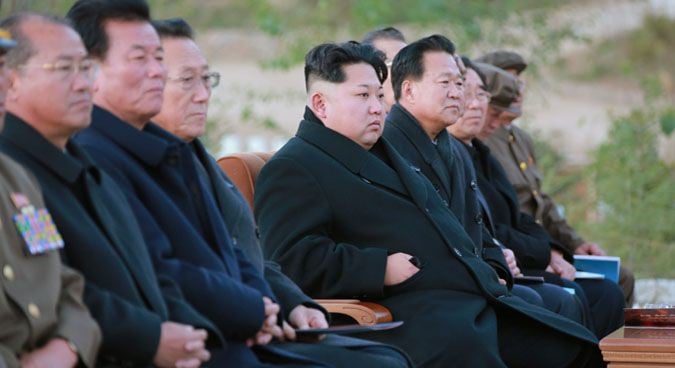
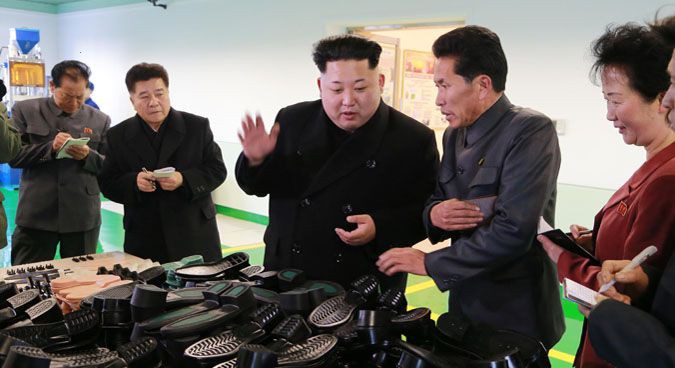
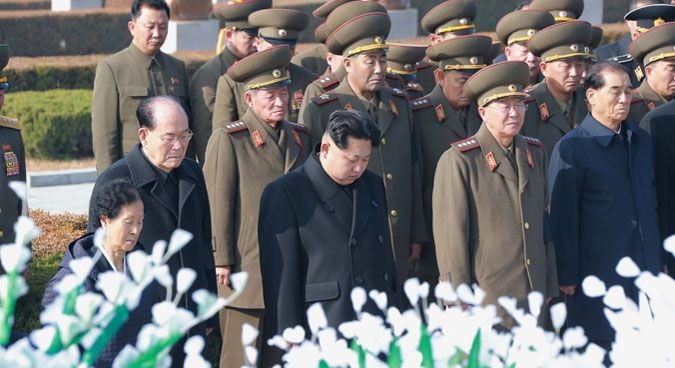
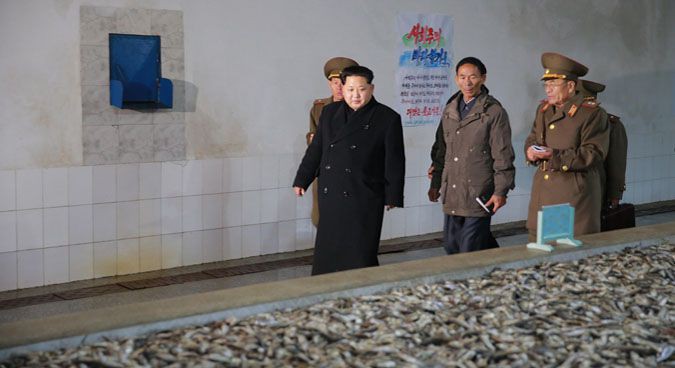
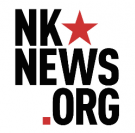
No comments:
Post a Comment